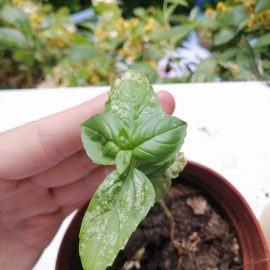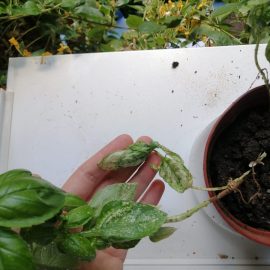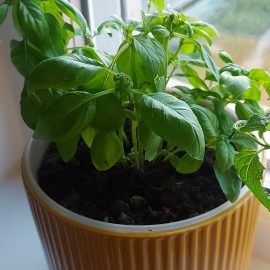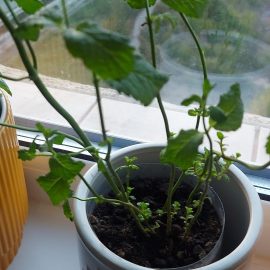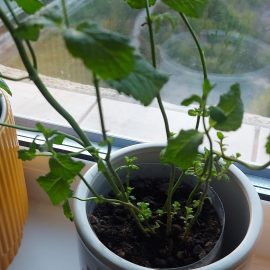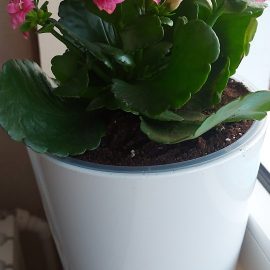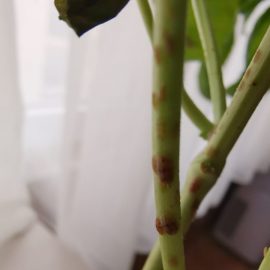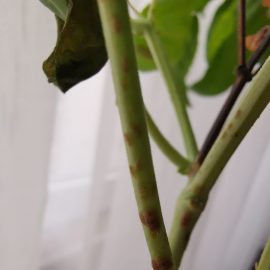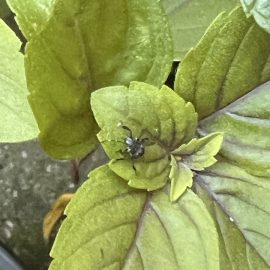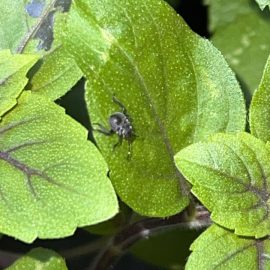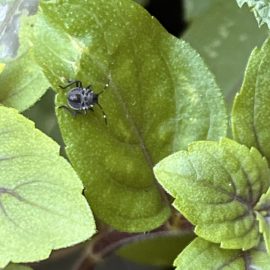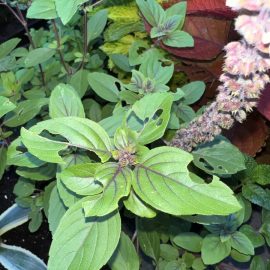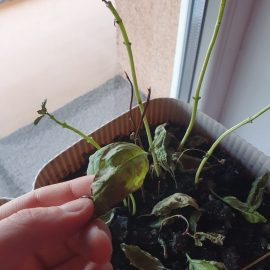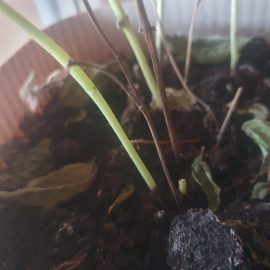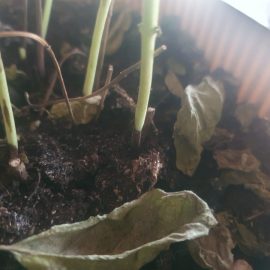Basil – planting, growing, and harvesting
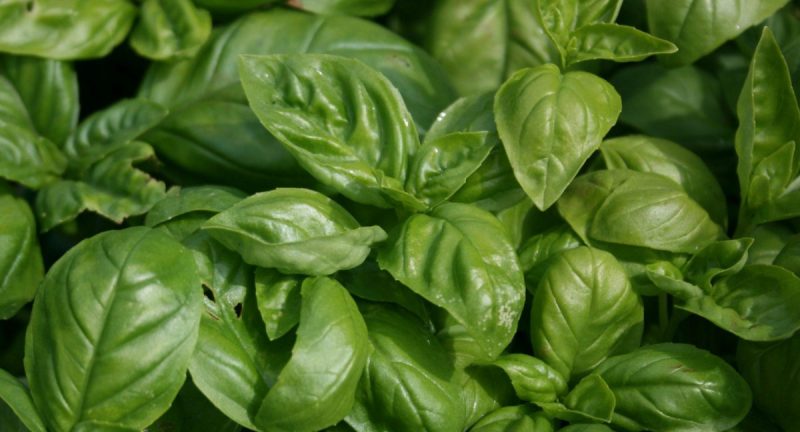
Basil (Ocimum basilicum) is a herbaceous plant, originally from India, Iran and other countries in Asia, being often associated with Italian cuisine as it is a basic component of typical Mediterranean dishes. It is cultivated in all countries as a spice and medicinal plant, being part of the aromatic plant family, the Lamiaceae.
Use
Basil is grown both as a spice plant and as an aromatic and medicinal plant.
Basil leaves and young shoots are used to flavour meat and fish dishes, sauces, salads, canned vegetables, etc. Also, basil is used in flavouring beverages, cosmetics, and perfumery. The leaves contain essential oils, carotene, vitamin C, phytoncides, mineral salts, etc.
Botanical characteristics
Basil is an annual plant, with pivot roots, richly branched, the main portion of the roots being found in the fertile layer of the soil surface. The plant is light green, strongly aromatic, with a straight stem, 30-70 cm long, branched at the base. The leaves are simple, petiolate, oppositely arranged and deciduous, with an oval or oval-lanceolate foliar limb, a smooth or corrugated surface and a full or slightly serrated edge. On the underside, the leaves have many glands that secrete essential oils. The flowers are small, zygomorphic, hermaphroditic, white, or pink.



Environmental requirements
This species has high demands in terms of temperature and light, needing temperatures of 20-25℃ and well-lit places for good growth and development. It prefers light-textured, humus-rich, neutral-pH soils that drain water well.
Cultivation
Crop establishment can be done through direct sowing or through planting seedlings. When preparing the soil, organic or chemical fertilizers should be administered and incorporated into the soil.
In the case of seedlings, the sowing has to be carried out towards the end of March, in warm seedbeds or heated polyhouses. Planting should be done starting in May, when the risk of late frosts is low. The seedlings should be hardened before transplanting to the place of cultivation.
If the culture is set up by sowing directly in the field, the work should be done starting with May, the young basil plants being sensitive to low temperatures. In both cases, distances of 20-25 cm between rows and 10-12 cm between plants have to be respected.
Recommended products
-
You can find products on a different store
Change Store -
You can find products on a different store
Change Store -
You can find products on a different store
Change Store -
You can find products on a different store
Change Store -
You can find products on a different store
Change Store -
You can find products on a different store
Change Store -
You can find products on a different store
Change Store -
You can find products on a different store
Change Store -
You can find products on a different store
Change Store -
You can find products on a different store
Change Store -
You can find products on a different store
Change Store -
You can find products on a different store
Change Store -
You can find products on a different store
Change Store -
You can find products on a different store
Change Store -
You can find products on a different store
Change Store -
You can find products on a different store
Change Store -
You can find products on a different store
Change Store -
You can find products on a different store
Change Store -
You can find products on a different store
Change Store -
You can find products on a different store
Change Store -
You can find products on a different store
Change Store -
You can find products on a different store
Change Store -
You can find products on a different store
Change Store -
You can find products on a different store
Change Store
Care
In the first period after planting or sprouting, weeding should be done to control the weeds and promote plant growth. If sown directly in the field, thinning of the plants has to be carried out, where needed.
In order to stimulate the branching, the tops of the stems have to be pinched regularly, in order to promote new growths. If inflorescences are observed, cut off the tops of the plant to prevent flowering. After flowering, the aroma of the leaves decreases.
Other maintenance work includes water management and root or foliar plant fertilization. Do not water the plants excessively, as the basil does not tolerate excessive water. It is possible to carry out 2-3 root fertilization, with water-soluble fertilizers, through the drip irrigation system, supplemented by foliar fertilizers.
Recommended products
-
You can find products on a different store
Change Store -
You can find products on a different store
Change Store -
You can find products on a different store
Change Store -
You can find products on a different store
Change Store -
You can find products on a different store
Change Store -
You can find products on a different store
Change Store -
You can find products on a different store
Change Store -
You can find products on a different store
Change Store -
You can find products on a different store
Change Store -
You can find products on a different store
Change Store -
You can find products on a different store
Change Store -
You can find products on a different store
Change Store -
You can find products on a different store
Change Store -
You can find products on a different store
Change Store -
You can find products on a different store
Change Store -
You can find products on a different store
Change Store -
You can find products on a different store
Change Store -
You can find products on a different store
Change Store -
You can find products on a different store
Change Store -
You can find products on a different store
Change Store -
You can find products on a different store
Change Store -
You can find products on a different store
Change Store -
You can find products on a different store
Change Store -
You can find products on a different store
Change Store
Harvesting and storage
Harvesting can be done at the same time with pinching for branching or whenever needed. At the beginning of summer, the plants are considered mature and can be harvested, dried, and stored for later consumption. Harvesting the leaves from the plants can be done before or after drying. The dried leaves must be stored in ventilated and dark places.
Diseases and pests
Basil can be attacked by aphids and thrips, which prefer the young tips of the plant, as well as by slugs. Of the diseases, powdery mildew and downy mildew cause the most damage. It is recommended to control weeds and respect the planting distances in order to favor the air circulation, and implicitly, to prevent the appearance of diseases and pests.
Recommended products
-
You can find products on a different store
Change Store -
You can find products on a different store
Change Store -
You can find products on a different store
Change Store -
You can find products on a different store
Change Store -
You can find products on a different store
Change Store -
You can find products on a different store
Change Store -
You can find products on a different store
Change Store -
You can find products on a different store
Change Store -
You can find products on a different store
Change Store -
You can find products on a different store
Change Store -
You can find products on a different store
Change Store -
You can find products on a different store
Change Store -
You can find products on a different store
Change Store -
You can find products on a different store
Change Store -
You can find products on a different store
Change Store -
You can find products on a different store
Change Store -
You can find products on a different store
Change Store -
You can find products on a different store
Change Store -
You can find products on a different store
Change Store -
You can find products on a different store
Change Store -
You can find products on a different store
Change Store -
You can find products on a different store
Change Store -
You can find products on a different store
Change Store -
You can find products on a different store
Change Store















































































































































































































































































































































































































































